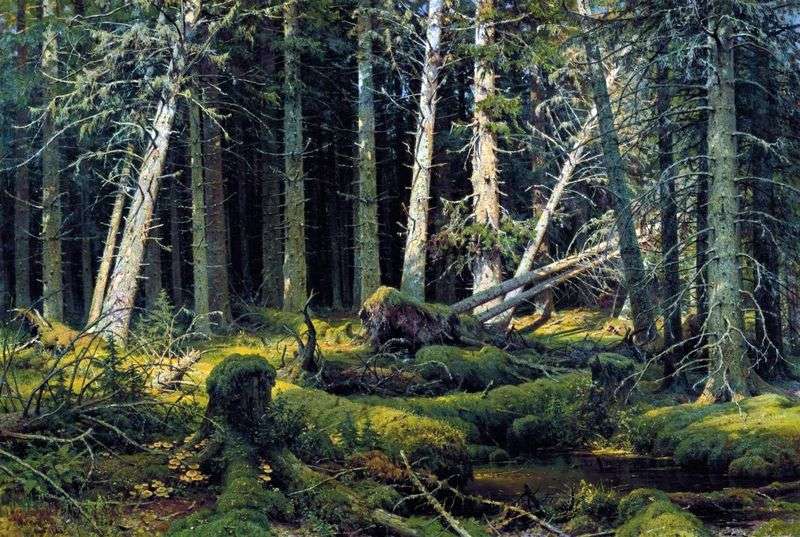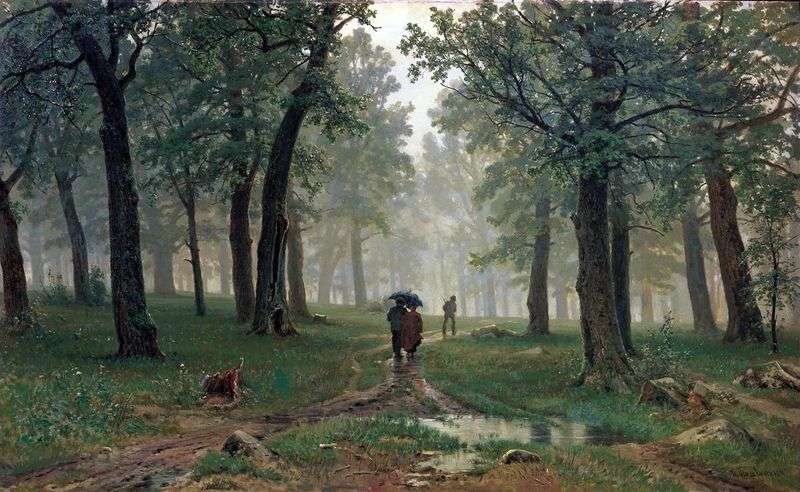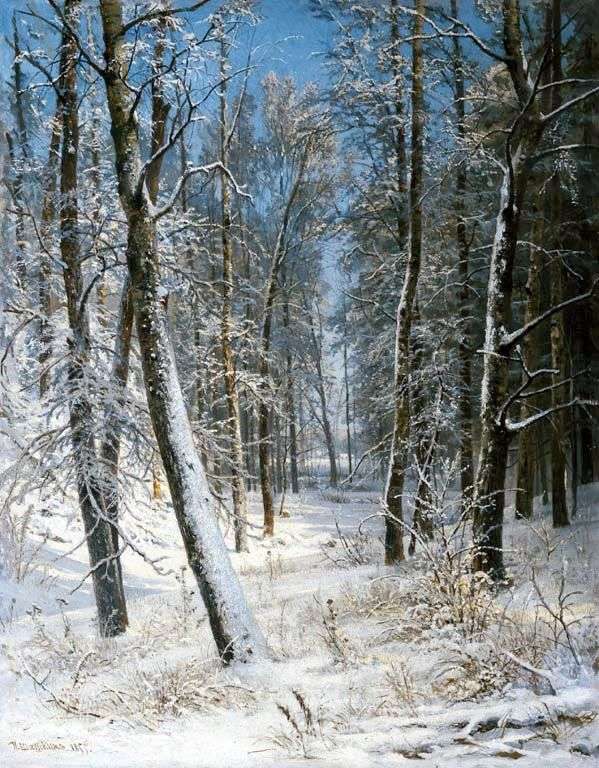
The burette was written in 1888.
The dramatic action unfolds as if on a stage. Fallen spruce trees create a complex picture of the movement. Vertical lines intersect with oblique lines. Mocked uprooted stumps, sharp boughs sticking out in a strict rhythm, broken branches create a complex composition marked by contrasts of light and shadow. The gloomy backdrop looms menacingly over the forest chaos that reigns on the clear glade with a swampy stream.
The trunks are voluminous, elastic, sculptural expressive. Color varies from sharp contrasts to the most subtle tonal transitions. Shishkin showed an expressive picture of forest death, fighting life and death, the visible and hidden forces of nature. There is no doubt that the artist resorted to a direct image, but even it causes associations, it seems an allegory. Overcoming a single pictorial meaning is the property of any great art.
“Burel” is full of expression, enclosed in the exposition, in the drawing, in chiaroscuro, in rhythm. Usually, Shishkin’s expression is not peculiar, and here it is evidence of the breadth of his picturesque-plastic possibilities.
Despite the fact that the wood is likened to the fallen giant, the artist strictly follows the natural impression in the sketch of elastic smooth-bodied spruce. But it is naturalness in the depiction of solid trunks that creates a second plan of values that strengthens the plot with a special meaning, a kind of subtext.
 Burelom (forêt de Vologda). Arbres abattus par le vent – Ivan Shishkin
Burelom (forêt de Vologda). Arbres abattus par le vent – Ivan Shishkin The rain in the oak forest by Ivan Shishkin
The rain in the oak forest by Ivan Shishkin The lodge in the forest by Ivan Shishkin
The lodge in the forest by Ivan Shishkin Winter in the Forest (Hoarfrost) by Ivan Shishkin
Winter in the Forest (Hoarfrost) by Ivan Shishkin Walk in the forest by Ivan Shishkin
Walk in the forest by Ivan Shishkin Burelom (bosque de vologda).Árboles derribados por el viento – Ivan Shishkin
Burelom (bosque de vologda).Árboles derribados por el viento – Ivan Shishkin Forest gave by Ivan Shishkin
Forest gave by Ivan Shishkin Brook in the birch forest by Ivan Shishkin
Brook in the birch forest by Ivan Shishkin